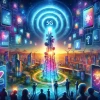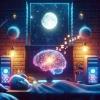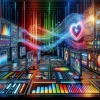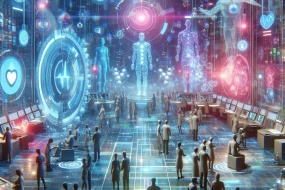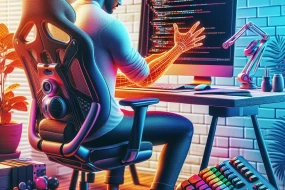
In the digital age, where coding has become a cornerstone of innovation and progress, ensuring a conducive work environment is crucial. Lighting is a pivotal yet often overlooked component that can significantly impact both productivity and eye health. This article delves into the nuances of optimal lighting for coding, offering practical insights and recommendations to help programmers maintain peak performance while safeguarding their eyes.
Understanding the Importance of Proper Lighting
Imagine this: you're deep into a coding marathon, and everything is going well until the headache starts. You rub your eyes, realizing they've been straining for hours. This scenario is all too common among developers, and often, the culprit is poor lighting. Proper lighting isn't just about aesthetics; it's about creating an environment where your eyes are not working overtime. Good lighting reduces glare, minimizes shadows, and helps maintain focus, all of which are essential for coding.
Types of Lighting: Finding What Works Best
When it comes to lighting, one size does not fit all. Understanding the different types of lighting can help you tailor your workspace to your needs.
1) **Natural Light:** If possible, position your desk near a window to take advantage of natural light. It is the most balanced and comforting light for your eyes.
2) **Ambient Lighting:** This is the general lighting of the room. It should not be too dim or too harsh. Think of it as the base layer of your lighting plan.
3) **Task Lighting:** This is focused lighting that helps illuminate your specific work area. A good desk lamp with adjustable brightness can be a game-changer.
4) **Accent Lighting:** While not essential for coding, accent lighting can enhance the ambiance, making your workspace more inviting.
The Role of Color Temperature
Color temperature, measured in Kelvin (K), plays a crucial role in how lighting affects your eyes and productivity. Lower color temperatures (around 2700K to 3000K) produce a warm, yellowish light, which is relaxing and ideal for winding down. On the other hand, higher color temperatures (5000K to 6500K) emit a cool, bluish light that mimics daylight and is better suited for tasks requiring concentration, like coding. Striking the right balance is key. During the day, a cooler light can keep you alert, while a warmer light can help ease into the evening.
Common Mistakes in Workspace Lighting
1) **Ignoring Glare:** Glare from screens or overhead lights can lead to eye strain. Position lights to the side of your screen to avoid direct glare.
2) **Inadequate Task Lighting:** Relying solely on ambient lighting can make it hard to focus. Ensure you have a dedicated task light for your keyboard and desk area.
3) **Overlooking Adjustable Lighting:** Lighting needs change throughout the day. Invest in adjustable lights to adapt to different tasks and times.
4) **Neglecting Natural Light:** Blocking out natural light can lead to a dreary workspace. Incorporate it as much as possible for a more pleasant environment.
Tips for Optimizing Your Coding Environment
1) **Invest in Quality Lighting:** It may seem like a minor detail, but quality lighting is a worthwhile investment for your health and efficiency.
2) **Positioning Matters:** Arrange your lighting to minimize shadows and reflections.
3) **Use Anti-Glare Screens:** These can help reduce eye strain significantly.
4) **Take Regular Breaks:** Follow the 20-20-20 rule: every 20 minutes, look at something 20 feet away for at least 20 seconds.
5) **Consider Smart Lighting Solutions:** Modern smart bulbs can adjust color temperature and brightness automatically, providing optimal lighting throughout the day.





















